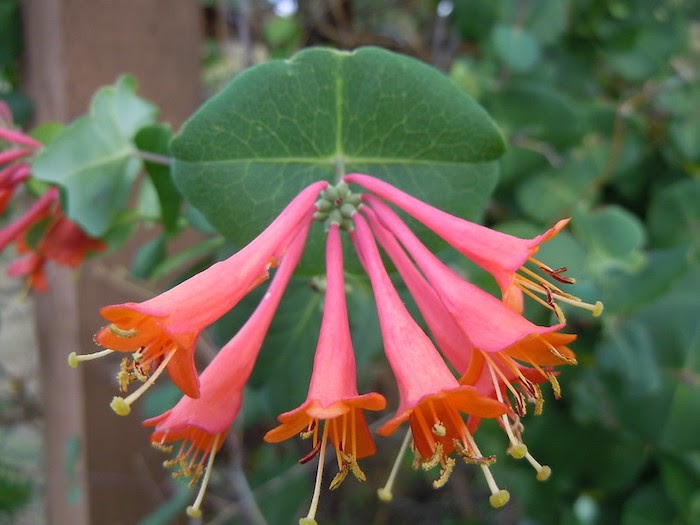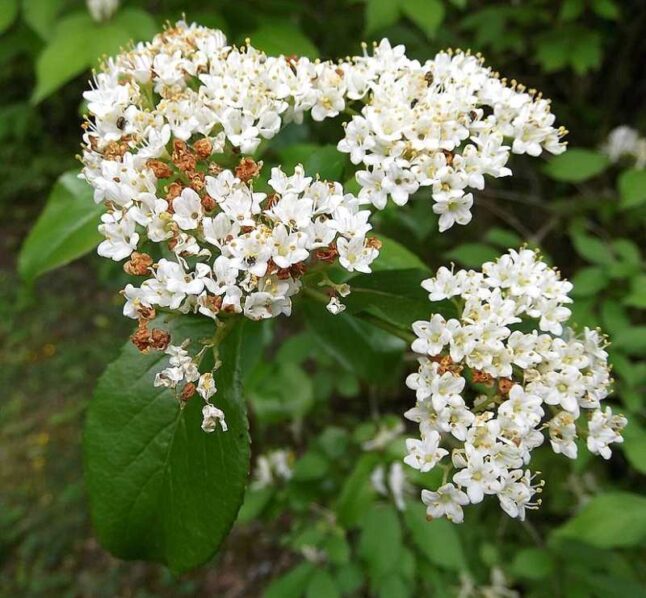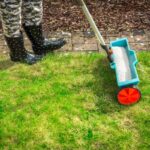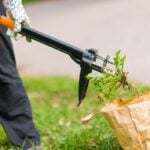
There are a lot of native plants in Kentucky that are important to the state’s ecosystem. Over thousands of years, these plants have evolved to Kentucky’s specific temperature, soil, and other natural conditions.
Consider the plant’s natural range and optimal growing conditions while selecting the best Kentucky native plants for your yard. Read this post to learn about the top native plant options for the Bluegrass State.
Top native plants in Kentucky include:
- White Snakeroot (Ageratina Altissima)
- Eastern Redbud (Cercis Canadensis)
- Black-Eyed Susan (Rudbeckia Hirta)
- Cardinal Flower (Lobelia Cardinalis)
- New England Aster (Symphyotrichum Novae-Angliae)
- Big Bluestem (Andropogon Gerardi)
- Wild Hydrangea (Hydrangea Arborescens)
- Swamp Milkweed (Asclepias Incarnata)
- Purple Coneflower (Echinacea Purpurea)
- Trumpet Honeysuckle (Lonicera sempervirens)
- Red Maple (Acer Rubrum)
- Rusty Blackhaw (Viburnum Rufidulum)
- Virginia Bluebells (Mertensia Virginica)
- FAQ
1. White Snakeroot (Ageratina altissima)

The small, native perennial plant known as white snakeroot or Ageratina altissima grows in Kentucky and other parts of the United States. It has oblong dark green leaves. In late summer and fall, the plant produces clusters of white flowers. Any garden in Kentucky will benefit significantly from the addition of this beautiful native plant.
- Hardiness Zones: 3-8
- Plant Type: Perennial
- Sun: Full Sun
- Soil Drainage: Moist But Well Drained, Poorly Drained
- Blooms: Summer (Mid, Late), Fall
- Height: 3-5 ft
- Attracts: Bees, Butterflies
- Range: All regions of Kentucky
2. Eastern Redbud (Cercis canadensis)

The small trees known as Eastern redbuds (Cercis canadensis) are native to the forests and thickets of Kentucky. In addition to being drought-resistant and low-maintenance, Eastern redbuds are an excellent tree for those just starting with a garden. They also work wonderfully as a backdrop for flower beds.
Because of its attractive foliage and low maintenance requirements, the Eastern redbud has become a symbolic native plant of Kentucky. They are commonly found in Louisville.
- Hardiness Zones: 4-9
- Plant Type: Trees (Deciduous)
- Sun: Full Sun, Partial Sun
- Soil Drainage: Well Drained
- Blooms: Spring (Early, Mid), Fall
- Height: 20-30 ft
- Attracts: Bees, Butterflies, and Hummingbirds
- Range: All regions of Kentucky
3. Black-Eyed Susan (Rudbeckia hirta)

Black-Eyed Susans are annual wildflowers that may be found in Kentucky. Their signature feature is a bright yellow flower with a dark brown to black center. In terms of care, this plant is ideal for novice gardeners because it does not require a lot of attention and maintenance. When growing this native plant, remember that it only lasts one to two years.
- Hardiness Zones: 3-9
- Plant Type: Annual or Biennial
- Sun: Full Sun
- Soil Drainage: Dry to Moist
- Blooms: Mid-summer, Fall (Early)
- Height: 2-3 ft
- Attracts: Bees, Butterflies, and Birds
- Range: All regions of Kentucky
4. Cardinal Flower (Lobelia cardinalis)

The cardinal flower blooms for a month or more in the late summer and produces beautiful red flowers. It is one of the top hummingbird-attracting plants in Kentucky. It is found on the roadsides and the banks of rivers and ponds. The cardinal flower is a short-lived plant that is remarkably pest and disease resistant.
- Hardiness Zones: 3-9
- Plant Type: Perennial
- Sun: Full Sun to Partial Shade
- Soil Drainage: Moist to Wet
- Blooms: Summer (Mid, Late) to fall
- Height: 2-4 ft
- Attracts: Bees, Butterflies, and Hummingbirds
- Range: All regions of Kentucky, but uncommon in the Bluegrass region
5. New England Aster (Symphyotrichum novae-angliae)

The New England aster is also commonly found in Kentucky and blossoms in fall. It produces small flowers with light purple petals and a vibrant yellow center. They typically grow in meadows and along roadways.
These asters thrive in a variety of soil conditions. The New England aster is an excellent choice for planting in a pollinator garden.
- Hardiness Zones: 4-8
- Plant Type: Perennial
- Sun: Full Sun
- Soil Drainage: Moist but well-drained, well-drained
- Blooms: Summer (Late), fall
- Height: 3-6 ft
- Attracts: Monarch butterflies and bees
- Range: All regions of Kentucky
6. Big Bluestem (Andropogon gerardii)

Big bluestem is a warm-season perennial grass that grows in clumps and has stiff straight stems. It is blue-green when it first sprouts in spring, deep green in summer, and orange-red in fall. However, it produces a dense cluster of deep purple flowers in the late summer. Additionally, it will self-seed if given the right conditions and care.
- Hardiness Zones: 4-9
- Plant Type: Ornamental Grass
- Sun: Full Sun
- Soil Drainage: Moist but well-drained, well-drained
- Blooms: Spring (Early, Mid, Late), summer (Early, Mid, Late), fall, winter
- Height: 3-6 ft
- Attracts: Butterflies and birds
- Range: All regions of Kentucky, except the Appalachian Plateau and Cumberland Mountains
7. Wild Hydrangea (Hydrangea arborescens)

Wild hydrangea is a popular native plant found in Kentucky. Most gardeners clip this plant’s stems to the ground in early spring to let new shoots sprout and flourish in the same season. In the summer, it produces clusters of beautiful white flowers.
- Hardiness Zones: 3-8
- Plant Type: Shrub (Deciduous)
- Sun: Partial shade
- Soil Drainage: Moist but well drained
- Blooms: summer (Early, Mid, Late), fall
- Height: 3-5 ft
- Attracts: Bees, Butterflies, Birds
- Range: All regions of Kentucky
8. Swamp Milkweed (Asclepias incarnata)

Swamp milkweed is a moisture-loving perennial. It is commonly found in open areas like streams and river banks. It produces light purplish-pink flowers. This plant also has beautiful seed pods in the fall.
As it attracts butterflies and several beneficial insects, many individuals have planted swamp milkweed to aid the monarch butterfly, whose population has declined dramatically during the previous two decades. Pests and diseases seldom affect swamp milkweed, so it requires significantly less care and maintenance than other plants.
- Hardiness Zones: 3-11
- Plant Type: Perennial
- Sun: Full Sun
- Soil Drainage: Moist but well-drained, moisture retentive, poorly drained
- Blooms: Summer (Mid, Late)
- Height: 4-5 ft
- Attracts: Bees, Butterflies, Hummingbirds
- Range: All regions of Kentucky
9. Purple Coneflower (Echinacea purpurea)

Purple coneflower is a perennial Kentucky native flower. Because of its durability, low maintenance, and height, this plant is frequently used in natural gardens and reclaimed areas.
Native Americans also have a long history of utilizing the purple coneflower’s root to treat ailments, including indigestion and chronic pain. It has been claimed that the purple coneflower’s petals also have anti-inflammatory effects.
- Hardiness Zones: 3-9
- Plant Type: Perennial
- Sun: Full Sun, Partial Shade
- Soil Drainage: Dry to Moist
- Blooms: Late spring, Summer (Early, Mid, Late), fall
- Height: 2-4 ft
- Attracts: Bees, Butterflies, Birds, Hummingbirds
- Range: All regions of Kentucky, except the Jackson Purchase region
10. Trumpet Honeysuckle (Lonicera sempervirens)

Trumpet honeysuckle, also known as coral honeysuckle, is a deciduous climbing vine producing attractive bright red foliage. It is an evergreen plant and is commonly found in Kentucky. It also has anti-inflammatory properties. Planting it near an arbor with arches is a great idea for vertical gardening.
- Hardiness Zones: 4-9
- Plant Type: Perennial
- Sun: Full Sun to Partial Sun
- Soil Drainage: Moist but Well-Drained
- Blooms: Spring, summer, fall
- Height: 10-20 ft
- Attracts: Bees, Butterflies, Birds, Hummingbirds
- Range: All regions of Kentucky, except the Cumberland Mountains
11. Red Maple (Acer rubrum)

As its name suggests, the red maple brings a burst of color to the environment throughout the year, from its red flowers in the spring to its reddish leaf stems in the middle of summer, vividly colored leaves in the fall, and colorful buds in winter. It is commonly found in Kentucky forests, and it’s an excellent option for creating shade in your garden.
- Hardiness Zones: 3-9
- Plant Type: Tree (Deciduous)
- Sun: Full Sun to Partial Sun
- Soil Drainage: Moist but Well-Drained, Acidic
- Blooms: Spring (Early, Mid, Late), summer (Early, Mid, Late), fall
- Height: 40-70 ft
- Attracts: Bees, Butterflies, Birds
- Range: All regions of Kentucky, but rare in the inner Bluegrass region
12. Rusty Blackhaw (Viburnum rufidulum)

Rusty blackhaw’s spring and fall colors make it an attractive native plant. It produces clusters of small white flowers in early spring, strikingly contrasting its glossy dark green leaves. It is occasionally used as an ornamental plant. Additionally, rusty blackhaw is named after the brown hairs on the underside of its leaves and stems. It is commonly found in rocky, dry woodlands.
- Hardiness Zones: 5-9
- Plant Type: Tree, Shrub
- Sun: Full Sun, Partial Shade
- Soil Drainage: Moist but Well-Drained, Well Drained
- Blooms: Spring (Mid, Late), summer (Early, Mid, Late), fall
- Height: 10-20 ft
- Attracts: Bees, Butterflies, Birds
- Range: All regions of Kentucky
13. Virginia Bluebells (Mertensia virginica)

Virginia bluebells (Mertensia virginica) are a perfect addition to a partial or full-shade woodland landscape. Their flowers start as pink buds and open into beautiful blue flowers. Over time, Virginia bluebells can spread into a dazzling colony under the tree canopy. They’re known as a spring ephemeral, so after the spring season, they will die back and go dormant until next year.
- Hardiness Zones: 3-8
- Plant Type: Spring ephemeral
- Sun: Partial shade to Full shade
- Soil Drainage: Moist but Well-Drained
- Blooms: Spring (Early, Mid)
- Height: 1-2 ft
- Attracts: Bees, Butterflies
- Range: All regions of Kentucky
FAQ
Phosphorus and potassium are the two most essential nutrients for promoting strong root development in plants. Any fertilizer mix that needs to produce thick, robust new roots should contain these two nutrients.
Selecting healthy plants and planting them in suitable growing conditions is the first step in preventing pests and diseases on native plants in Kentucky. Plants should also be checked for signs of damage from pests and diseases on a regular basis.
If a pest or disease is found, it must be identified so that the proper method of control can be implemented, such as the removal of infected plant parts through pruning or the application of an organic insecticide or fungicide (a mix of mild liquid soap and water).
Lawn care needs in Kentucky vary with the season. Fall lawn care includes things like cutting the lawn high, adding winter fertilizer, and overseeding. Spring lawn care includes things like aeration, dethatching, and weed control.
You can make lawn care easier on yourself by planting the best grass seed for Kentucky, which includes both warm-season and cool-season grass types.
Final Thoughts
Taking care of Kentucky native plants and gardens is simple, but do you know what’s even simpler? Hiring a lawn care professional to take care of your lawn and landscape for you. Professional gardeners are well-versed in native plant species and can advise you on the optimal locations for planting and care. If you want to help nurture a lush lawn that includes Kentucky native plants, don’t hesitate to contact a lawn care service provider near Louisville, Lexington, or anywhere in Kentucky.
Main Photo Credit: Matthew Beck / Wikimedia Commons / CC BY-SA 3.0





